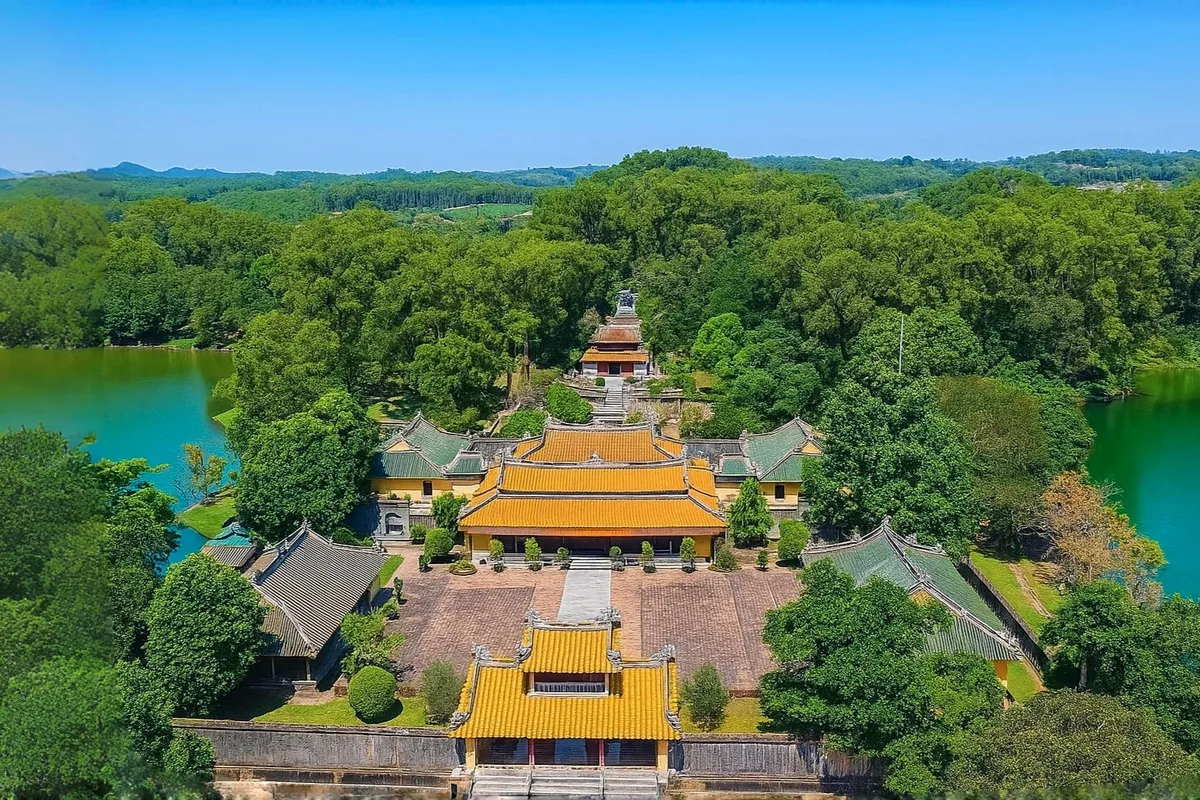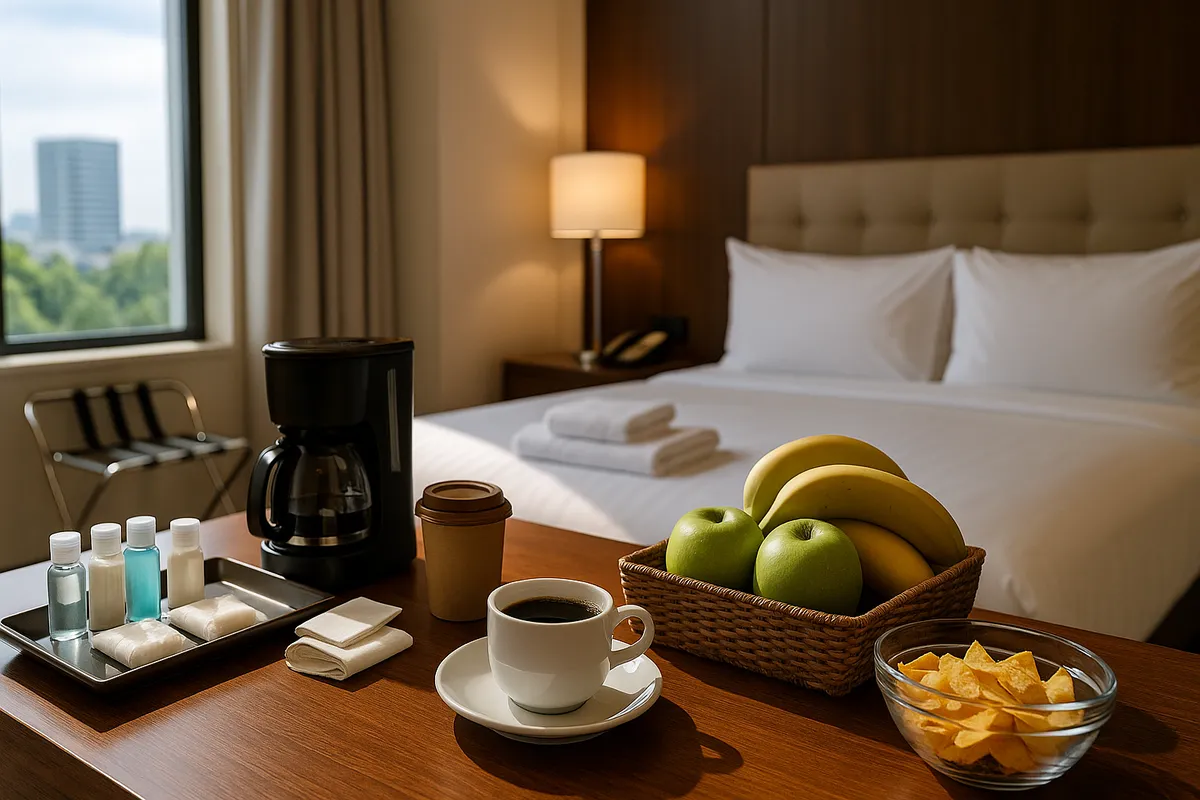Minh Mang Tomb and the Mystery of 3 Forgotten Treasure Vaults
- Wednesday, Jun 18, 2025, 06:50 (GMT+7)
Minh Mang Tomb and the Mystery of 3 Forgotten Treasure Vaults
Minh Mang Tomb is not merely a burial site. It is a living narrative from the past, an eternal canvas etched into the sky of Hue with brushstrokes of philosophy, refined aesthetics, and a firm belief in permanence. Quietly resting in Huong Tho, part of Huong Tra Town, about twelve kilometers southwest of Hue city center, this architectural complex goes far beyond being a final resting place for an emperor. It is a declaration in stone, wood, and water. It reveals how human life interweaves with the cosmos, how death transforms into continuity, and how the past remains vividly alive in the present.
Emperor Minh Mang, the second ruler of the Nguyen Dynasty, was not only renowned for his sweeping reforms but also for his poetic soul and devotion to Confucian order. These qualities are reflected in every inch of the tomb. This is not a place to glance at, it is a path meant for contemplation and presence. The journey begins at Dai Hong Mon, the main gate, a solemn red portal that has remained shut for nearly two centuries. It opened only once, on the day the emperor’s coffin entered. Since then, it has stood in silence, guarding a sacred passage that belongs to no one but the past.
Today, visitors enter through two side gates. That alone serves as a gentle reminder that some doors are not meant for the living. Inside, the tomb unfolds like a perfectly choreographed universe, laid out along three symmetrical axes. The layout is not only architectural but deeply symbolic. It speaks of balance, cosmic harmony, and the structure of power. As visitors step onto the Bai Dinh courtyard, flanked by stone statues of mandarins, elephants, and horses, there is an immediate sense of stillness. These statues are more than ornamental. They embody loyalty, memory, and a subtle gravity that has withstood centuries of wind and rain.
Behind the courtyard lies Sung An Temple, dedicated to the emperor and empress. Constructed from aged wood and inlaid with mother-of-pearl, its every beam and roof tile is a masterpiece of Nguyen craftsmanship. The temple breathes. Light trickles through lattice panels, casting moving shadows that invite quietness. There is no grandeur here meant to impress. Only a calm that leads one inward.
Beyond the temple lies Tan Nguyet Lake. Shaped like a crescent moon, it reflects a timeless philosophy. Across its calm waters stretches a stone bridge named Thong Minh Chinh Truc. The name means wisdom and integrity. Crossing it feels like more than a step. It feels like a passage between what is and what was, a quiet test of one’s presence and awareness. These features are not there to impress. They are there to remind.
High on the central axis is Minh Lau Pavilion. This is where later emperors would come to reflect. Inside rests a wooden platform, carved and adorned with wheels made of bronze. These wheels are not for ease of movement. They symbolize that power is never still. It must flow and adapt with time. Minh Lau is a place to look outward and inward. Surrounded by pine forests and open to the elements, it provides a rare sense of union with the natural world. This was the emperor’s choice. Mountain at his back, river before him, and silence as his final companion.
Beneath the surface of the tomb lie whispered legends. Some say vaults filled with gold and jade were buried with the emperor. Others tell of guards entombed to protect the secret forever. These stories are part myth, part memory, yet they deepen the mystery. They make this place not just a site to see, but a space to feel.
From above, the layout resembles a person lying in repose. Head rests on the mountain. Legs stretch toward the Perfume River. This was not an accident. It was the result of meticulous geomantic design. Minh Mang’s tomb does not impose. It invites. Through proportion and subtlety, it speaks with power. That quiet voice leaves a lasting impression.
Young visitors come here for beauty. The moss-covered tiles, the ancient bricks, the wooden doors framing the sky. They often stay longer than expected. Because this is not only about photographs. It is about slowing down. It is about touching something ancient and being touched by it in return. In this silence, many find a presence they did not expect. They begin to ask questions. Why does this place feel so complete? Why does time seem slower here? The tomb does not answer. It allows.
Minh Mang Tomb is not a place to simply visit. It is a place to dwell. To understand the endurance of values that feel forgotten. To recognize beauty not in extravagance but in harmony. To remember that silence is not absence. It is another form of voice. Here, time does not pass. It pauses. Memory is not frozen. It breathes.
This site is not reserved for historians or architects. It is for anyone who has ever wanted to step away from noise. For anyone who wonders whether the past still has a voice. For those seeking depth, not novelty. Here, under the pines and beside the water, time becomes soft. Memory becomes present. Reflection becomes inevitable.
If you ever passed the name Minh Mang in a textbook and never paused, now is the moment to return. Enter through the side gate. Walk along the crescent lake. Touch the stone poem. Sit on the sun-warmed bricks. Here, history is not an idea. It is a space you can enter. A space that will change you.
Some places, if you do not visit now, you may regret forever. Minh Mang Tomb is one of them. Not because it is more beautiful. Not because it is more ancient. But because it holds the power to bring something back to life. Not treasure. Not myth. But something inside you. Something still, something curious, something deeply human.
And when you walk away, you do not leave it behind. You carry it with you. Like a quiet truth whispered in stone. Waiting for the right moment to speak again.

 CHECKIN.VN
CHECKIN.VN








Share on